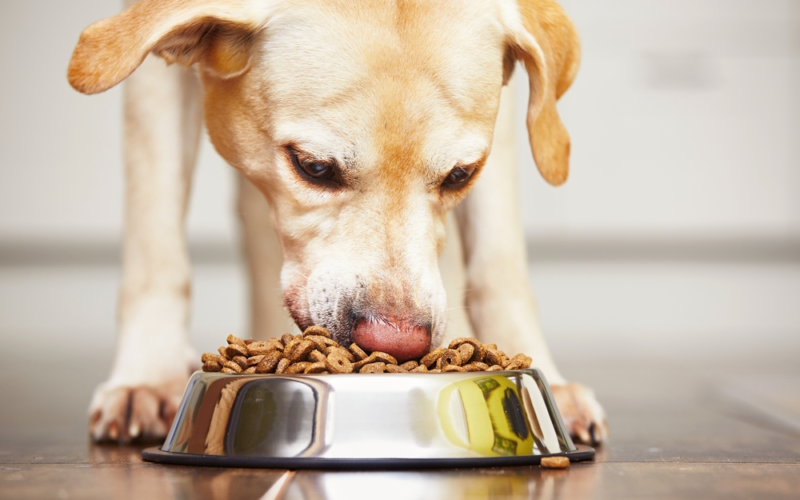Ellen Britt for CNT #wooftips
The majority of dog owners are not likely to pay too much attention to the food they feed their canines. As long as it’s a reputable brand put out by a well known company, they tend to trust it will provide the nutrition it claims to provide.
Other dog owners feed a brand that has been recommended, or even sold, by their vet, especially if their dog has a health condition, such as a digestive problem or kidney disease for example, that requires a specialized diet.
But perhaps it’s time for dog owners to start paying more attention to what goes into their dog’s food bowl. Dog’s lives are short enough as it is, and giving them food that may contain potentially harmful ingredients might well shorten the days we have with them.
Here are seven common dog food ingredients you want to avoid and why:
One
Artificial Colors such as Red 40, Blue 2, Yellow 5, Yellow 6 and Titanium dioxide. These artificial color enhancers are totally unnecessary for the health of your dog. They are added to make the food look more appealing to the human eye. Your dog could care less! Why expose your dog to potentially toxic chemicals that are useless for his nutrition?
Two
Animal Byproducts are added to dog foods as a low-cost way to boost the protein content of their foods. Byproducts are not meat. They are the parts of animals that are slaughtered and have no commercial value, and are often added to dog food in amounts that are inappropriate. Much of the protein contained in these animal byproducts is not easily digestible by your dog.
Three
Sweeteners and Artificial Flavorings are often added to dog foods so they will make the food more appealing to the dog. This is especially true in the case of highly processed, low-quality dog foods that are frankly unappetizing to your dog. The flavorings do nothing except to add calories that have no real nutritional value and some are potentially toxic. These ingredients can include sugar, MSG, corn syrup, glandular meal, tallow and phosphoric acid among others.
Four
Preservatives are chemicals added to dog foods to enable them to have a longer shelf life. These chemicals are potentially toxic to your dog and include such compounds as BHA, BHT, sodium nitrate, sodium nitrite, ethoxyquin and propyl gallate.
Five
Meat not fit for human consumption is composed of animal parts that are literally not fit to be fed to humans, as it’s composed of meat that can come from animals that are diseased and even animals that died before they could be slaughtered. This also includes road killed carcasses, spoiled carcasses and even cancerous tissue. Definitely not the type of meat you want your dog to be eating. Look for terms like meat meal, poultry meal, blood meal and animal fat or meal without a name for the animal species on your dog food ingredients label.
Six
High Glycemic Carbohydrates should be avoided. Dogs are carnivores and food that is high in carbs, especially high glycemic carbs should be shunned. These carbs can cause rapid rises in blood sugar and can lead to diabetes and obesity.
Seven
Additional Fillers and Additives are chemicals that for the most part have no nutritional value and may be dangerous. Many are vitamins and minerals that are added, because the food is of such low quality that without them the food would be unbalanced.
We’ll talk next time about what to look for in a quality dog food that you can safely feed your dog.
By Ellen Britt
Dr. Ellen Britt has loved dogs since she was a child. She is particularly fond of the Northern breeds, especially Alaskan Malamutes. Ellen worked as a PA in Emergency and Occupational Medicine for two decades and holds a doctorate (Ed.D.) in biology.

In Other NEWS


































[…] https://citynewsandtalk.com/seven-common-pet-food-ingredients-you-should-avoid-feeding-your-dog/ Give Feedback on Facebook Comments Below […]